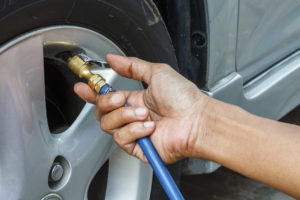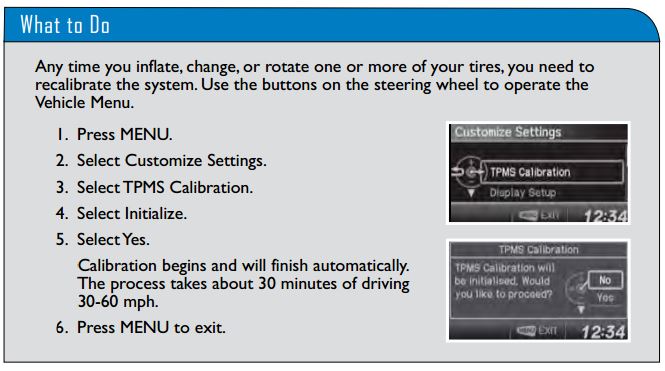
Support for giving Calif. BAR oversight over ‘minor’ repairs reflects complexity of today’s cars
By onBusiness Practices | Legal | Repair Operations | Technology
As cars grow more complicated and technologically advanced — but still manage to bang themselves up in accidents — collision repairers and auto insurers are trying to determine what they can still treat as “minor” damage.
This arose during the scanning forum two months ago at NACE, when insurers asked OEMs if directives to scan “all” vehicles in “any” collision really meant “all” and “any” or if there were some model years and damage that could be excluded. Sure, there’s a self-interested element to the queries (“Do I really have to eat ALL my vegetables, Mom?”), but it’s a legitimate question. Collision repairers who have the liability and responsibility to perform a proper repair but don’t want to add excessive costs are also probably curious.
But the expo also demonstrated just how complex cars have become, and how “any” and “all” might be realities today or soon for all practical collision repair intents and purposes. (Remember, the average age of the car on the road is 11.5 years, but the average repairable vehicle is about 7 years, according to CCC and Mitchell.) Toyota showed us the sensitivity of the Occupant Classification Systems — which have for years had the crucial task of determining whether to deploy an airbag for a passenger. Even a seemingly minor impact can affect its behavior.
Recognizing similar issues with mechanical service and repair, California has supported giving the Bureau of Automotive Repair the power and responsibility to determine what services are still “minor” and which one deserve BAR oversight 40 years after the initial list of unregulated “minor services.”
However, the bill that would have enacted this seems to be on shaky ground. California Democratic Gov. Jerry Brown signed Assembly Bill 873 on Friday, but it seems to only takes effect if a different but related Senate Bill 778 becomes law before Jan. 1, 2017.
The Legislative passed SB 778, but Brown vetoed it, and it’s up to the Legislature to determine if it will override the veto or not. SB 778 passed the Assembly 66-10 and the Senate 29-10. Ironically, Brown’s SB 778 veto message called AB 873 an example of how 778 should have been done — even though he may have effectively killed both bills.
If AB 873 survives, it wouldn’t take effect until Jan. 1, 2018 — although it will immediately clarify that unregulated “minor” practice of changing a battery definitely doesn’t apply to changing the “propulsive” batteries used in hybrids or electric cars. Installing one of those now without registering with the BAR would be a crime under the law.
Even if the bill dies, everyone seems to be in agreement on its message: You can’t assume traditionally minor car repairs are still minor.
The California Autobody Association, California Automotive Business Coalition, Automotive Service Councils of California, California Tire Dealers Association and Les Schwab all supported AB 873.
“Current law (more than 40 years old) declares certain minor services such as: repairing and changing tires, lubricating vehicles, installing light bulbs, batteries, windshield wiper blades, replacing spark plugs, replacing fan belts, oil and air filters are exempt from BAR oversight,” the Automotive Service Councils of California wrote, according to a Senate floor analysis. “Because of the advances in automotive technologies many of these minor services now require more specialized training and skills and may necessitate the removal of engine components and other electrical and computer equipment.
“There also is an unfair playing field for those businesses that are currently registered/licensed by BAR who must compete with repair facilities that provide the same repair services but are not registered or licensed.”
Another state document further references situations where something as mundane as changing a tire or spark plug can require training.
“During the BAR’s 2014 sunset review oversight hearing, the BAR raised the issue of whether certain ancillary services that are not subject to registration should be,” a House floor analysis Aug. 26 states. “Historically, these services were viewed as simple services that were often performed at gasoline service stations and carried a lower risk of consumer harm. However, the BAR noted that, because of advances in automotive technology, many of the services require specialized repair skills and may require the removal of automotive systems, engine components, shrouds or other electrical equipment.”
For example, the federal TREAD Act demands all new vehicles since September 2007 have a tire pressure monitoring system (TPMS), according to Schrader and the House analysis.
“When a vehicle with a TPMS is serviced, the technician may need specialized training, such as on how to update the vehicle’s on-board diagnostic system,” the analysis states. “A malfunctioning TPMS can lead to tire blowouts, undetected slow leaks, and other dangerous conditions.”
Do the math. Under the 11.5 years and 7 years numbers above, September 2007’s 100 percent compliance with tire sensors basically shows up 100 percent in the average car being serviced or repaired in 2019, and probably quite a few of them in garages today. That 2007 compliance target means also effectively means those sensors and associated OEM repair demands are factors in 100 percent of the average collision repairs since 2014, and probably a high percentage before that. (For more on how tech mandated years ago shows up to suddenly affect your collision life today, see here.)
Even owners might need to be aware of how cool tech means maintenance and DIY repairs can require more thought and work — definitely proving California’s point that an automotive professional paid to do such work better know this stuff. For example, Honda tells 2014 Civic owners they must drive the car for at least a half-hour between 30-60 mph to calibrate such a tire pressure monitoring system every time “you inflate, change, or rotate one or more of your tires.”
As for spark plugs, the BAR reported “some vehicle manufacturers have made spark plugs inaccessible without removal of other major systems, such as the removal of motor mounts or parts of entire engine,” according to the House analysis. “Because failure to perform these services correctly can result in serious harm to consumers, the BAR believes that an automotive repair (company) registration should be required to perform those types of repairs.”
So check the OEM procedures before you classify something as minor and do it the same way you’ve done for decades. According to the BAR, you never know.
Correction: The veto of Senate Bill 778 places the fate of the legislatively-linked Assembly Bill 873 into question despite the latter being signed into law. Thus, an earlier version of this story indicating AB 873 would take effect might prove incorrect and has since been updated to qualify its fate.
More information:
California Assembly Dave Jones, Sept. 30, 2016
Images:
Analysis of a California auto repair bill signed into law (though still with an uncertain future) Friday references situations where something as mundane as changing a tire or spark plug can require training. (iJacky/iStock)
Honda tells a mere owner of a 2014 Civic — not even an automotive professional — he or she must drive the car for at least 30 minutes between 30-60 mph to calibrate the tire pressure monitoring sensors every time you ” inflate, change, or rotate one or more of your tires.” (Provided by Honda)

